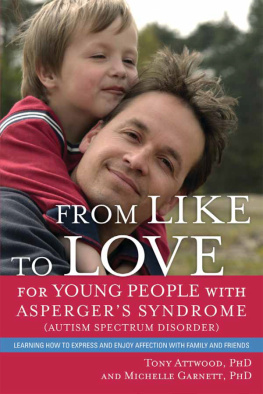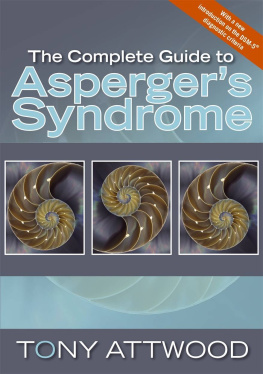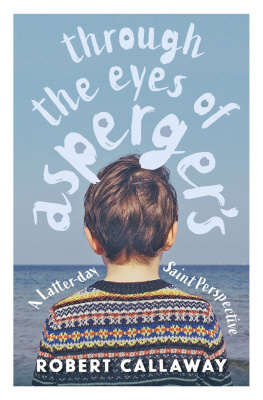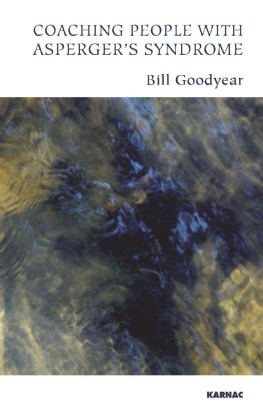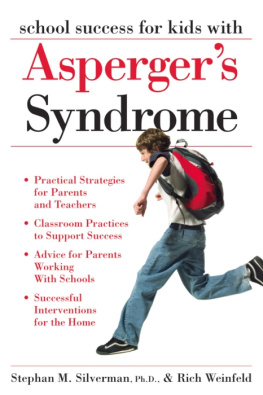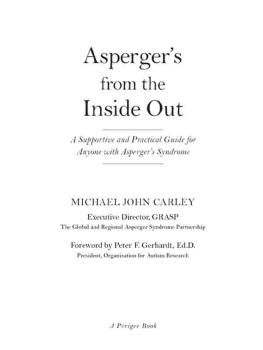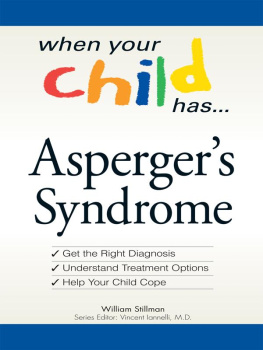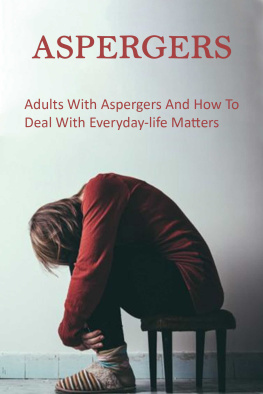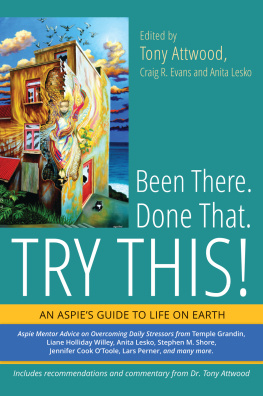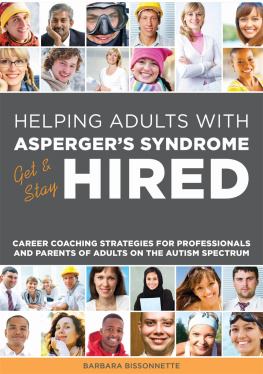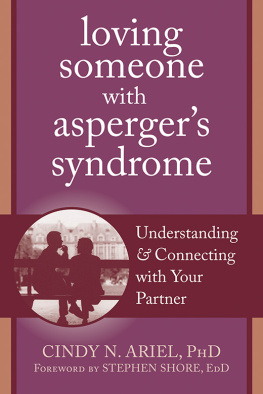Appendix
Affection Questionnaires
Adapted from Sofronoff, Lee, Sheffield and Attwood (in press).
Scoring and understanding the affection questionnaires
Important background
The questionnaire was given to 54 children (aged 513 years old) with Aspergers syndrome who participated in a trial of the Affection programme (Andrews, Attwood and Sofronoff, under review). Each of these children completed the questionnaire at the start and at the end of the programme. An average score was calculated each time by adding up all the childrens scores and dividing by the number of children.
The Affection for Others Questionnaire (AOQ)
The AOQ is a 20-item questionnaire that examines giving and receiving verbal and physical affection, and the communication of empathy by the child, to classmates, friends and family members. There are four questions within each subscale, making a total of 20 questions.
There are two parts to each question. The first part asks you about the appropriateness of your childs affectionate gestures. Scores range from 1, Never appropriate, through to 7, Always appropriate. The second part of the question assesses the amount of affection that your child displays, with responses ranging from 1, Not enough, to 7, Too much.
To score the AOQ, add up the appropriateness (the first part of the question) and amount (the second part of the question) scores separately to give a Total Appropriateness score and a Total Amount of Affection score.
UNDERSTANDING THE TOTAL APPROPRIATENESS SCORE
In the trial of the Affection programme, the average Total Appropriateness score for a child with Aspergers syndrome (aged 513 years old) was 66 at the start of the programme, and 77 at the end of the programme (Andrews et al., under review). The research trial indicated that most of the children improved in how appropriately they showed affection.
It may be useful for you to compare your childs Total Appropriateness score with the averages from this research trial, to determine how appropriately he or she demonstrates affection compared to other children with Aspergers syndrome. Measured before and after the Affection programme, the Total Appropriateness score will be a good indicator of how much improvement your child experiences as a result of the Affection programme.
UNDERSTANDING THE TOTAL AMOUNT OF AFFECTION SCORE
Scores of 59 and below are considered Low affection, scores between 59 and 100 are considered Adequate affection, and scores 101 and above are considered High affection. A desired outcome of the Affection programme is that your child is demonstrating Adequate affection.
The Affection for You Questionnaire (AYQ)
The AYQ is a 19-item questionnaire that examines giving and receiving verbal and physical affection, and the communication of empathy by the child, to a parent.
Similar to the AOQ, there are two parts to each question. The first part of the question measures the frequency of affection shown to you, on a scale from 1, Never, to 7, Twice a day or more. This part of the questionnaire is a qualitative measure and no score is calculated. The second part of the question measures the amount of affection your child shows, Total Affection, on a scale from 1, Not enough, to 7, Too much.
To calculate the Total Affection score, add up all of the scores for the second part of each question in the questionnaire.
UNDERSTANDING THE TOTAL AFFECTION SCORE
A score of 57 and below is considered Low affection, a score between 57 and 95 is denoted as Adequate affection, and a score of 96 or over is categorized as High affection. As for the AOQ above, a desired outcome is that the child shows Adequate affection.
The General Affection Questionnaire (GAQ)
The GAQ is a 12-item questionnaire that examines aspects of affectionate communication such as expressing inadequate or excessive affection, the importance of affection in your childs daily life, and the degree to which teaching and support regarding affection are required. To complete the questionnaire, assign a rating from 1, Strongly disagree, to 7, Strongly agree, to each of 12 statements. These statements variously assess the amount of affection the child shows, the appropriateness of that affection, the impact of the difficulties with affection your child has, and your childs knowledge of affection.
To score, simply sum all of the 12 items to give a Total Difficulty with Affection score.
UNDERSTANDING THE TOTAL DIFFICULTY WITH AFFECTION SCORE
In the trial of the Affection programme, the average score for the 54 children (aged 513 years old) with Aspergers syndrome was 42 (Andrews et al., under review).
It may be useful to compare your own childs score to this average. The GAQ was found to be most useful in the initial assessment of childrens affection difficulties, to discover where the childs difficulties lie.
The Affection for Others Questionnaire (AOQ)
The questions below are all to do with the types of affection your child (aged between 5 years and 13 years old) with autism spectrum disorder shows others. This means the affection that he or she shows to people outside of his or her immediate family such as: school teachers, classmates, family friends, shopkeepers and strangers. Please fill this out even if your child has very few difficulties expressing affection for others.
There are two components to each question:
1. How appropriately does your child show others that form of affection?
Consider how appropriately your child shows affection to others by rating this on a seven-point scale, from never to always, and writing that number in the box. On the scale, a score of 1 indicates Never appropriate, 4 indicates Sometimes appropriate and 7 indicates Always appropriate.
a) How appropriate is the amount of affection he or she shows others?
Consider how appropriate you find the amount of affection your child shows to others by giving a rating on the seven-point scale, where 1 indicates Not enough, 4 indicates About right and 7 indicates Too much.
Please see the example below:
1. Is your child able to say hello to others in an appropriate manner? |  |
For example, rating this as a 1 means that you consider your child is rarely appropriate when saying hello to others because he or she does not do it enough. Alternatively you may rate it as a 6 or 7 if the reason that your child was not able to say hello in an appropriate manner was because he or she did it too frequently.
| a. What do you think of the amount he/she does this? |  |
For example, rating this as a 1 means your child never says hello in an appropriate manner, and may shout it at people or ignore people when a hello would be appropriate.
There are 20 questions in this section.
The first 8 questions are about your child GIVING affection to others. Examples of others are: school teachers, classmates, family friends, shopkeepers, and strangers.
GIVING VERBAL AFFECTION
1. Is your child able to say I love you/I like you to others appropriately (e.g. classmates or family friends)? |  |
| a. What do you think of the amount he/she does this? |  |
2. Is your child able to say something to others about how important the relationship between them is appropriately? |
Next page
